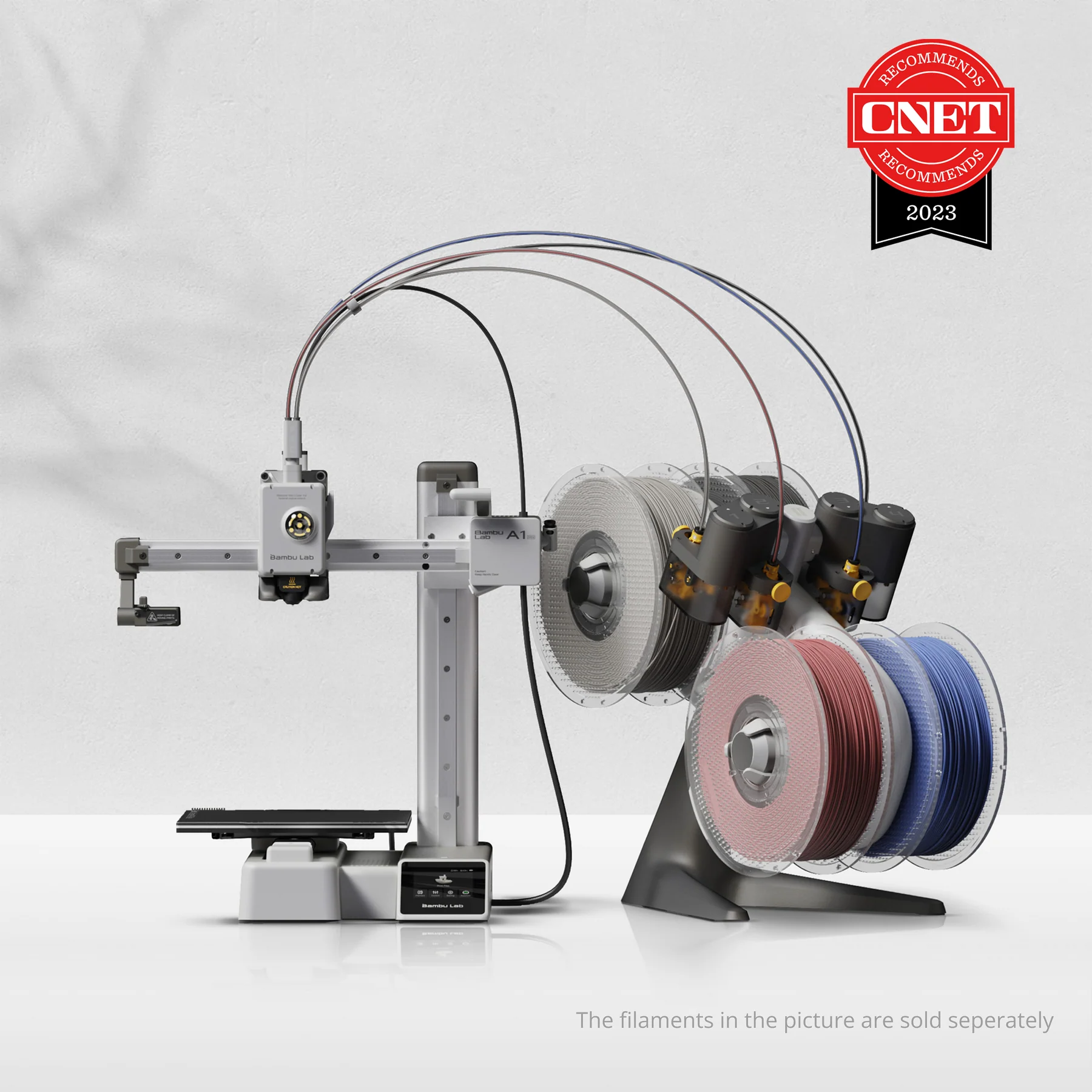Compare Ender 3 vs A1 Mini
Comparison between the best 3D printers
Choose the best 3D printer at the best price. The cheapest 3D printers are here.
Buy a 3D printer here with 3D Fila.
 |
 |
|
| Model | Ender 3[BUY Ender 3] |
A1 Mini |
| Printing Material | Filament | Filament |
| Buy Filament for Creality 3D Ender 3 | Buy Filament forBambu Lab A1 Mini | |
| Estimated price | $210,00 | $549,00 |
| Manufacturer | Creality 3D | Bambu Lab |
| Release Year | 2018 | 2023 |
| Print Volume [mm] | 220x220x250 | 180x180x180 |
| Printer Size [mm] | 440x440x465 | 315x347x365 |
| Weight [kg] | 6,62 | 5,5 |
| Power Loss Recovery | NO | YES |
| Enclosed printer | NO | NO |
| Bed Leveling | Manual | Automatic |
| Filament End Sensor | NO | YES |
| Bed type | Heated | Heated |
| Power supply system | Bowden | Direct Drive |
| Standard nozzle | 0,4 | 0,4 |
| Maximum Nozzle Temperature [°C] | 255 | 300 |
| Maximum Bed Temperature [°C] | 110 | 80 |
| Maximum printing speed [mm/s] | 180 | 500 |
| Filament holder | YES | YES |
| Camera for supervision | NO | NO |
| Recommended filaments | PLA, TPU, ABS, PETG | PLA, PETG, TPU, PVA |
| Recommended slicers | Cura, Simplify, Slic3r | Bambu Studio, Super Slicer, Cura, Prusa Slicer, Orca |
| Maximum Resolution [mm] | 0,1 | 0,1 |
| Processor | 8 bits | 32-bit Silenciosa |
| Display | Mono | Touchscreen 2,4'' |
| Power Supply | 24V / 270W | 150 W |
| Connectivity | SD / USB | Wifi, Bambu bus, Cartão SD |
| Operating systems | Windows, Mac, Linux | Windows, Linux, Macbook |
| Date of registration in the system | 2021-04-13 | 2024-04-10 |
| Release date | 2018 | 2023 |
| Extra features | The Ender 3 V1 is a DIY assembly 3D printer, a sales leader since 2017, standing out for its cost-benefit. With a wide printing capacity, it has a CNC machined structure for precision and stability. It offers high-precision prints with low noise, thanks to its innovative V-profile and pulleys. It has a self-adhesive magnetic platform for easy removal of models and excellent adhesion. The Ender 3 heats up quickly, reaching 100°C in 5 minutes, ideal for agile prints. It includes protection against power failures, allowing you to resume printing after interruptions, saving time and material. | The Bambu Lab A1 Mini stands out not only for its impressive speed and automatic calibration, but also for its multi-color printing capability thanks to AMS Lite. This innovative system makes multi-color printing easy, making it accessible to everyone. AMS Lite, specific to the A1 Mini, supports up to four different materials simultaneously, providing creative freedom without complications. With comprehensive sensors for energy monitoring and recovery, a camera for timelapses and Wi-Fi control, the A1 Mini and AMS Lite together offer an intuitive and advanced 3D printing experience, ideal for materials such as PLA, PETG and TPU, and designed for simplicity and fast maintenance with quick-change nozzles. |
| Support for multiple colors and materials (AMS and CFS) | NO | YES |
Notes * |
||
| Cost-benefit | 6 / 10 | 7 / 10 |
| Hardware | 0.5 / 10 | 4.8 / 10 |
| Tela | . | . |
| Print volume | 3 / 10 | 3 / 10 |
| Performance | 1 / 10 | 4 / 10 |
| [BUY Ender 3] |
Conclusion |
| In conclusion, the comparison between the Creality Ender 3 and the Bambu Lab A1 Mini highlights distinct advantages and trade-offs for potential buyers. The Ender 3, priced more affordably, appeals to users seeking a reliable entry-level 3D printer with a solid print volume and an established reputation. Its DIY assembly adds a layer of customization and hands-on experience, making it ideal for hobbyists and those on a budget. However, it lacks automatic features such as power loss recovery and filament sensors, which can be crucial for uninterrupted printing. On the other hand, the Bambu Lab A1 Mini offers advanced capabilities that justify its higher price point. With features like automatic calibration, multi-material printing support, and enhanced connectivity options, it caters to users looking for a modern and efficient 3D printing experience. Its impressive maximum printing speed and the inclusion of thoughtful features (like smart monitoring) provide added convenience and flexibility, especially for more complex projects. Ultimately, the choice between the two depends on the user's priorities: the Ender 3 serves as a solid, cost-effective option for beginners, while the A1 Mini appeals to those willing to invest more for advanced functionality and ease of use. |

